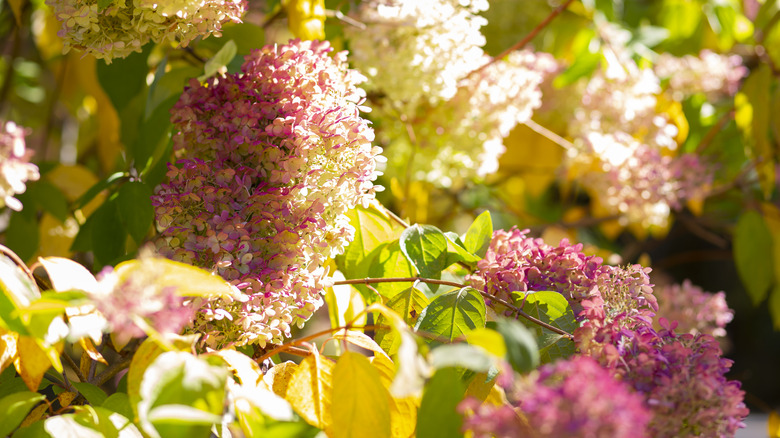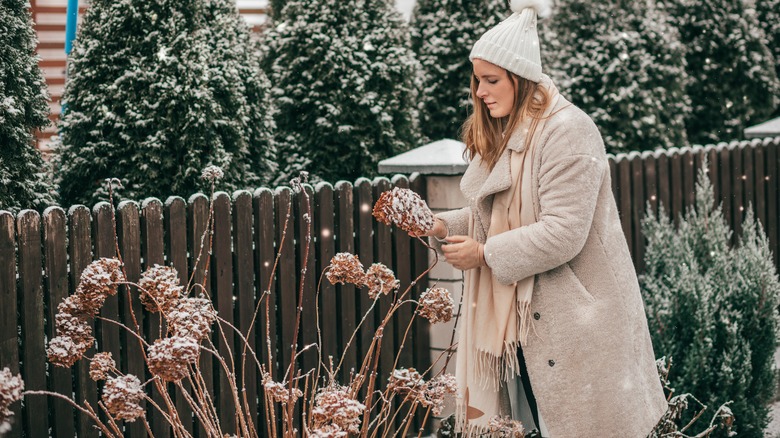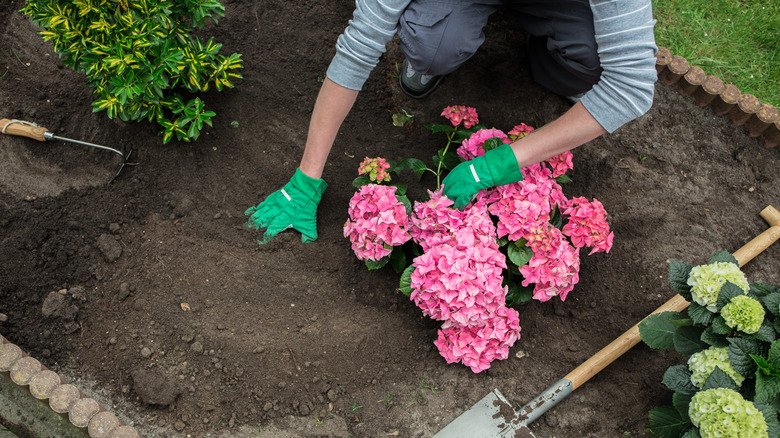Avoid Making This Major Mistake With Your Hydrangeas In The Fall
Knowing how to care for your plants in the fall ensures that they have all they need to be strong and healthy as temperatures drop. If you're preparing your hydrangeas for winter, these bushes can be covered with a material and mulched thoroughly to keep them warm and properly hydrated. Fertilization is also sometimes added to the fall care routine for hydrangeas, but this is a mistake. This is because adding nutrients to the soil could cause new growth, and these branches won't be strong enough to make it through the cold season.
The best times to fertilize hydrangeas are during early spring, late spring, and summer, while fall is a better time to focus on proper hydration and mulching. Water them thoroughly, then apply a few inches of mulch to suppress weeds and allow them to retain their moisture. For varieties of summer-blooming hydrangeas, fall is also the best time to prune. Cut off any dead or weak parts so the plant can direct its energy towards its healthy branches as it enters its dormant period.
Why a hydrangea shouldn't be fertilized in the fall
Fall is sometimes a good time to fertilize plants because it can prepare them for winter. The fertilizer feeds their root systems, which continue to grow during this time, and gives them nutrients to store so they have a healthy start when the growing season comes back around. However, different plants and varieties have different needs, and hydrangeas will not benefit from fall fertilization.
It is a major mistake to fertilize hydrangeas in the fall because it can stimulate new growth that might not have time to get strong before winter, making the plant more susceptible to cold damage. If your bush struggles to stay alive because of harsh weather, you may end up losing the new growth, so allow your hydrangeas to make the most out of their dormant period. All phases are significant in a plant's life. Just like the growing period is important, dormancy is as well because it is a time for them to rest and redirect their energy to their roots instead of to growth.
The dangers of over-fertilizing
Another problem with fertilizing in the fall is that, if you've already given your hydrangea nutrients in the spring and summer, this will lead to over-fertilization. Hydrangeas do not need lots of extra nutrients to survive, so avoid making this common hydrangea mistake by knowing not only when to fertilize but also how much. Over-fertilizing your hydrangeas can cause several issues that may weaken or kill them. Excessive fertilization may disrupt the natural nutrient balance in the soil, affecting the plant's ability to absorb all the essential nutrients it needs. It can lead to fertilizer burn, which is when the roots dry out. Too much fertilizer can also slow down and lessen bloom growth.
To avoid these problems, fertilize at the right time of the year in the spring and summer instead of the fall, and give your plant the right amount of fertilizer. Conduct a soil test to know how nutrient-dense it is so you know what your specific hydrangea variety needs. Choose a balanced, slow-release fertilizer, and always follow the recommended dosage on the product label.


